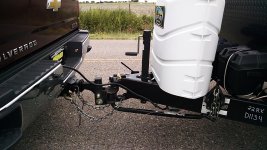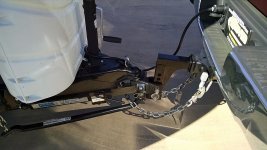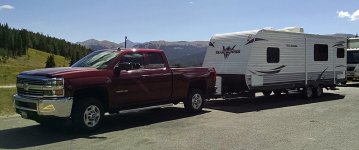Hello all,
New member here, new trailer new hitch. We purchased new 2015 Wilderness 3150DS from Camper World. This is our first trailer, we had popup before. We also got Equalizer hitch installed by dealer but I think it needs some adjustments. I noticed the rear of my Expedition is sagging about 2 ½ - 3 inches and front virtually the same with and without weight distribution. The trailer appears to be level when hooked up with WD engaged. I realize that Expedition has a soft suspension but should I attempt to transfer more weight to the front axle? I read somewhere that both front and rear should squat about 1 ½ together.
Any suggestion would be appreciated.
Alex
New member here, new trailer new hitch. We purchased new 2015 Wilderness 3150DS from Camper World. This is our first trailer, we had popup before. We also got Equalizer hitch installed by dealer but I think it needs some adjustments. I noticed the rear of my Expedition is sagging about 2 ½ - 3 inches and front virtually the same with and without weight distribution. The trailer appears to be level when hooked up with WD engaged. I realize that Expedition has a soft suspension but should I attempt to transfer more weight to the front axle? I read somewhere that both front and rear should squat about 1 ½ together.
Any suggestion would be appreciated.
Alex





